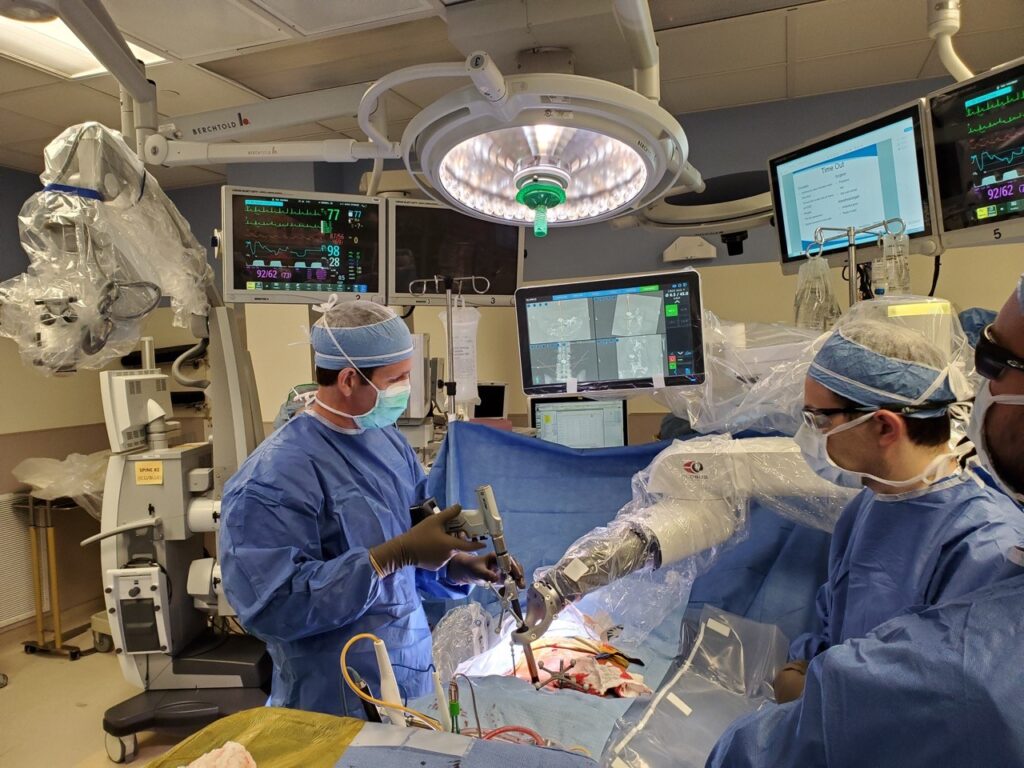Washington University spinal neurosurgeons at Barnes-Jewish Hospital performed the first navigated robotic-assisted minimally-invasive spine surgery in Missouri on Tuesday, July 23, 2019. Wilson Zachary Ray, MD, and Ammar H. Hawasli, MD, PhD, used the technique for a spinal fusion procedure on a 79-year-old patient from St. Louis. The operation took less than 2 hours, and the patient is doing well after spending less than a day in the hospital.
Spinal fusion corrects problems with the bones in the spine (vertebrae). Robotic-assisted spinal fusion uses a navigational system in which a computer merges the CT and X-ray images to map the anatomy and guide neurosurgeons in the procedure including placement of screws. The technique significantly reduces the level of radiation exposure for patients and the operating team, and allows the neurosurgeon to better plan incisions and the sophisticated screw placement needed in the operation.
The strength of robotic-assisted spine surgery is the equipment’s accuracy and the computer guidance system,” says Ray.
Patients often spend several days in the hospital after an open spinal fusion, but spend less than 24 hours with the minimally invasive operation. There is typically less pain, more rapid recovery, and less need for narcotics after minimally invasive procedures.
Washington University neurosurgeons use the platforms of both major robotic spine system manufacturers.
